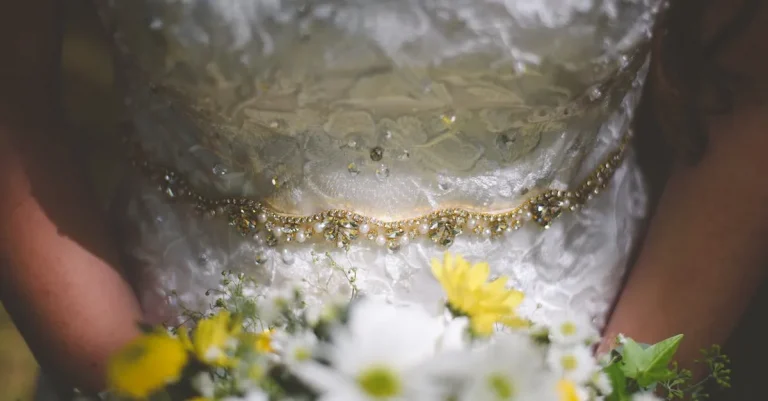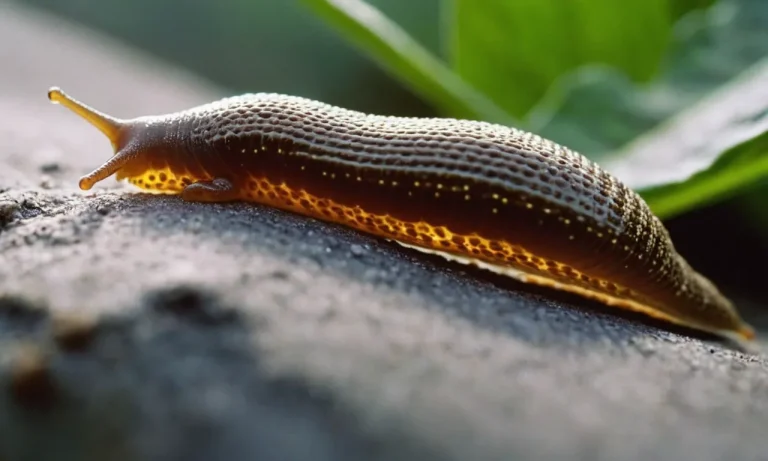Myrrh is an aromatic resin that has been used for spiritual and religious purposes for thousands of years. If you’re short on time, here’s a quick answer to what myrrh spiritually symbolizes: Myrrh has rich symbolic meaning in many faiths and cultures, usually representing mortality, suffering, healing, and protection.
In this comprehensive guide, we will explore the extensive spiritual symbolism and significance behind myrrh, its use throughout history, and its meaning in Christianity and other religions. We’ll cover interesting topics like why myrrh was one of the gifts brought to baby Jesus, how it’s connected to concepts like death and the afterlife, and how it has been used in religious rituals and ceremonies over the millennia.
The Significance of Myrrh in Christianity
Myrrh as One of the Three Biblical Gifts
In the Bible, myrrh was one of the three gifts, along with gold and frankincense, brought by the Three Wise Men and presented to the baby Jesus. This marked myrrh as a substance of great value and importance in Christianity (Encyclopedia Britannica).
The myrrh was symbolic of Christ’s mortality, foreshadowing his death and burial. This differs from more joyous gifts like gold symbolizing Jesus’ royal status as “King of Kings” and frankincense representing his divine role.
Myrrh’s solemn and somber symbolism sets it apart while still recognizing Christ’s multiple roles.
Connections to Christ’s Crucifixion and Burial
Beyond the nativity story, myrrh continues to be associated with Christ’s death. As Jesus was crucified, he was offered wine mixed with myrrh to dull the pain, but he refused it (Mark 15:23). Myrrh also played a key role after Jesus’ death when Nicodemus and Joseph of Arimathea prepared his body for burial by bringing a mixture of myrrh and aloes to wrap the body (John 19:39-40).
This connects back to the Magi’s gifts indicating Jesus’ mortality. The SVG Martha Beatrice website notes this “points towards his humanity and suffering”. So from birth to death, myrrh bookended and recognized Christ’s mortal life and sacrifice.
Use in Religious Ceremonies and Rituals
Beyond its mentions in Scripture, myrrh continues to have spiritual significance through its use in religious rituals. As a bitter, perfumed oil, it makes sense as a symbol of suffering. In Catholic and Orthodox churches, holy oil used for anointing often contains myrrh.
Myrrh incense is also common in church services. According to the Bible History website, burning myrrh was believed to please God. Myrrh’s strong aroma symbolizes how prayers rise to heaven. Many desktop worship spaces or home altars contain myrrh resin or essential oils to represent these ceremonial purposes and spiritual meanings.
| Reference | Myrrh Symbolism |
|---|---|
| Three Magi’s gifts | Christ’s mortality |
| Wine offering at crucifixion | Pain and suffering |
| Burial wrappings | Humanity and death |
| Holy oil for anointing | Sacrifice and sorrow |
| Incense | Prayers to God |
As this overview shows, myrrh has maintained profound symbolic meaning in Christianity related to Christ’s mortal life and role as a sacrifice. It solemnly reminds Christians of his humanity and suffering while also representing prayers and grace rising to the heavens.
For these reasons, myrrh remains a vital spiritual substance today.
Myrrh Symbolism in Other Faiths and Cultures
Ancient Egypt
In Ancient Egypt, myrrh was seen as a symbol of the afterlife. The Egyptians used myrrh in the embalming process to preserve bodies after death. Myrrh was also burned as incense in temples and used as an offering to the gods Osiris and Ra.
According to Egyptian mythology, myrrh trees grew near the tree of life in the afterworld. Myrrh resin was thus believed to carry life-giving and regenerative properties.
Ancient Egyptians also associated myrrh with the sun god Ra, as its golden color resembled the sun. Myrrh smoke was thought to enable communication between the living and the dead. The spiritual meaning of myrrh for Egyptians was divine transformation – from death to eternal life.
Traditional Chinese Medicine
In Traditional Chinese Medicine (TCM), myrrh is called mo yao and is considered to have “moving” properties that stimulate circulation. It is used in formulas for treating blood stagnation, inflammation, and swelling. Myrrh also clears heat in the blood and relieves pain.
According to TCM philosophy, stagnant qi and blood are often the root causes of illness. As myrrh gets energy and blood moving, it also moves blocked emotions like grief. In this sense, myrrh holds symbolic meaning for freeing one’s true spirit or purpose that may have become trapped from emotional blockages or wounds.
Hinduism and Ayurveda
The medicinal use of myrrh dates back over 5,000 years in India’s traditional Ayurvedic healing system. Called bol in Sanskrit, Ayurvedic texts describe myrrh’s cleansing properties for the blood, tissues, and subtle energy channels of the body.
Myrrh and other resins like frankincense are believed to carry the sacred vibrations of divine trees. According to Hindu mythology, Lord Shiva lives deep in the dense forests of Mount Kailash, sitting in meditation under ancient trees. When scraped, these sacred trees bleed divine resin.
As such, myrrh is seen as a blessing from nature carrying Shiva’s transcendental energy. When burned as incense for meditation or consumed for natural healing, myrrh awakens and purifies on physical, energetic, and spiritual levels.
| Ancient Egypt | Traditional Chinese Medicine | Hinduism & Ayurveda |
|---|---|---|
| Symbol of afterlife and regeneration | Moves blocked energy and blood | Divine cleansing vibration from nature |
The Spiritual Properties and Meaning of Myrrh
Mortality, Grief and Suffering
Myrrh has long been associated with mortality, grief, and suffering. In the Bible, myrrh was one of the gifts presented to the baby Jesus by the Three Wise Men, symbolizing his mortality and the suffering he would eventually endure on the cross (Matthew 2:11).
Historically, myrrh was used in ancient Egyptian embalming processes to prepare bodies for the afterlife. The ancient Greeks and Romans also used myrrh as part of funeral rites to anoint the deceased. Even today, myrrh essential oil is commonly used in funeral homes.
The aromatic scent of myrrh evokes feelings of solemn contemplation and sorrow. Burning myrrh incense can create an atmosphere conducive to quietly reflecting on mortality, working through grief, or finding meaning in suffering.
Healing and Protection
In addition to its associations with death, myrrh has long been prized for its healing properties. According to a 2021 research review, early Greek and Middle Eastern medical traditions used myrrh to treat wounds, infections, and inflammatory conditions (NCBI).
Today, myrrh essential oil contains antioxidant and antimicrobial compounds still used to support oral, skin, digestive, and respiratory health (PubMed). It also has a protective energy, promoting strength during difficult times.
Some spiritual traditions use myrrh smoke or incense to cleanse sacred spaces before rituals or prayers. The smoke is thought to ward off negative energy. Myrrh resin burned over charcoal disks can fill an entire room with its warm, woody aroma.
Contemplation and Spiritual Transformation
The rich, grounding scent of myrrh awakens the senses and quiets the mind. Myrrh connects us with the mysterious cycles of death and rebirth in nature.
Like its bitter taste, the sorrowful aromas of myrrh inspire solemn inward reflection. Yet through fully embracing suffering, we can ultimately transform painful experiences into wisdom.
| Myrrh’s Spiritual Lessons | Everyday Applications |
|---|---|
| Impermanence of life | Live fully without taking people or time for granted |
| Working through loss | Allow yourself to grieve deeply to process pain |
| Finding meaning in hardships | Look for personal growth opportunities during challenges |
Like the ancient traditions that have embraced it through the millennia, myrrh reminds us that spiritual wisdom often comes from difficult yet transformative life experiences.
Myrrh Use Through the Ages
Myrrh has a long and rich history of use throughout human civilization. This aromatic resin has been used for spiritual, medicinal, and practical purposes across many cultures for over 5,000 years.
In ancient Egypt, myrrh was burned as incense during rituals and ceremonies to cleanse spaces and invoke the gods. The Egyptians also used myrrh as part of the embalming process to preserve mummies. Myrrh’s anti-bacterial properties aided in slowing decay.
In traditional Chinese medicine, myrrh is considered to have a balancing effect and has been used to treat circulatory, digestive, and gynecological issues. It also plays a role in traditional Ayurvedic medicine from India.
Spiritually, myrrh has become a symbol of suffering, death, and resurrection. This is largely due to myrrh’s mention in the Bible. In the New Testament, myrrh was one of the gifts presented to the baby Jesus by the three Magi.
Later in the Bible, Jesus was offered wine and myrrh on the cross to ease his suffering before his death. Myrrh’s connection to burial is solidified here. Jesus’s body was also treated with myrrh according to Jewish burial customs before being placed in the tomb.
Christian theology embraces myrrh as a symbol of Christ’s Passion and connects it to concepts like sacrificial love, redemptive suffering, life emerging from death, healing, and sanctification.
Myrrh continues to play a role in various spiritual and religious rituals today. For example:
- In the Eastern Orthodox Church’s Easter services, congregants are anointed with holy oil made of myrrh.
- Myrrh incense is used in Purification ceremonies in Wicca symbolizing spiritual cleansing and preparation.
- In the Roman Catholic and Anglican churches, pellets of myrrh resin are traditionally burned on hot coals in a censer called a thurible during Mass.
Myrrh has also been important economically. Historically, myrrh wasmore valuable by weight than gold in many cultures.
The mystique, scarcity, and difficulty of obtaining myrrh added to its value. Myrrh resin is collected from small, thorny sap-producing trees. Resin extraction is by perforation, which is labor intensive but helps keep trees healthy.
Myrrh was rare outside of regions where its native Commiphora trees grew, like Ethiopia and Yemen. Caravan routes transported myrrh to trade centers like Alexandria, Constantinople, and Rome.
Even today with modern transport, myrrh remains relatively expensive. Wholesale prices for myrrh resin can range from $7-22 per ounce depending on grade.
However, Christianity’s strong attachment to myrrh makes it popular despite price. When purchasing resins for incense or oils, most consumers buying myrrh do so for spiritual supply shops or personal religious practice.
Myrrh’s long history and pervasive symbolic meaning give this ancient resin a mystique that continues today. Despite changes in economics, globalization, and religion over millennia, myrrh’s ability to evoke the sacred in ritual remains remarkably consistent.
Conclusion
Myrrh has maintained rich symbolic meaning across cultures and faiths for thousands of years. It represents the sorrow and mortality of the human condition, while also providing comfort, healing, and protection.
Myrrh connects believers to foundational stories of their faiths and facilitates spiritual ritual and transformation. Even as civilizations and religions have evolved over the millennia, myrrh continues to be an integral anchor point for humanity’s spiritual relationship with the divine.






